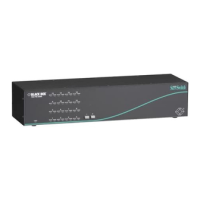
Do you have a question about the Black Box ServSwitch SW721A-R5 and is the answer not in the manual?
| Product Type | KVM switch |
|---|---|
| Number of Ports | 2 |
| USB Support | Yes |
| Audio Support | Yes |
| PC Selection | Hotkeys, push button |
| Port Type | USB, Audio |
| Switching Method | Hotkeys, push button |
Contact details for ordering and technical assistance for the ServSwitch.
Overview of the manual's content covering installation, operation, and troubleshooting.
Mandatory safety precautions for operating the electrical equipment.
Details on the items included in the ServSwitch package.
Highlights of the main features and functionalities of the ServSwitch.
Specifies the necessary equipment for using the ServSwitch system effectively.
A brief guide to get the ServSwitch system connected and operational quickly.
Detailed steps for setting up a single ServSwitch unit.
Instructions on how to switch between connected computers using keyboard commands.
Details on the specific cables needed for expanding the ServSwitch system.
Steps involved in setting up a cascaded ServSwitch system.
General guidelines for proper use of the ServSwitch with connected equipment.
Information on compatible CPU types and requirements for the ServSwitch.
Details on supported mouse and keyboard types and configurations.
Guidelines for compatible monitors and video signal requirements.
Comprehensive explanation of each keyboard command for ServSwitch operation.
Command to save current settings to nonvolatile memory.
Command to configure the screen saver inactivity time.
Command to resynchronize PS/2 mice with the CPU.
Command to display the computer label on the screen.
Command to bring up the ServSwitch configuration menus.
Command to display the computer selection window.
Information on connecting and using the RS-232 port for control and upgrades.
Steps for connecting a computer or terminal to the ServSwitch RS-232 port.
Instructions for upgrading the ServSwitch firmware using available methods.
Steps to upgrade firmware using terminal emulation software.
Guide to connecting audio devices for the ServSwitch.
Guide to connecting serial devices like touchscreens and graphic tablets.
Introduction to using the ServSwitch's on-screen display interface.
How to access the main configuration menu via keyboard commands.
Procedure for saving changes made in the ServSwitch configuration menus.
Setting the keyboard type for system configuration.
Setting the mouse type for system configuration.
Configuring the maximum number of computers the ServSwitch can manage.
Setting the number of submaster units connected to the system.
Setting the number of CPU ports on each submaster.
Configuring the delay time between scans in automatic mode.
Enabling or disabling the automatic scanning feature.
Setting whether scanning begins automatically on power-up.
Adjusting the keyboard's key repeat rate.
Adjusting the delay before keyboard keys start repeating.
Assigning custom names to connected computers for easy identification.
Specifying the keyboard mode (PC1, PC2, PC3) for each connected CPU.
Specifying the mouse type (PS/2, Serial) for each connected CPU.
General overlay settings including color scheme, resolution, and screen saver.
Selecting from predefined color schemes for the ServSwitch interface.
Setting the resolution and refresh rate for ServSwitch generated video.
Configuring the built-in screen saver patterns and behavior.
Setting the inactivity time before the screen saver activates.
Customizing the appearance and position of the computer selection window.
Customizing the appearance and position of the computer label.
Setting security options to protect access and configuration.
Setting a password to protect the ServSwitch configuration menu.
Setting a password to protect access to connected computers.
Configuring the time of inactivity before automatic user logout.
Procedure for setting or removing configuration and access passwords.
Steps to restore the ServSwitch to its original factory default settings.
Guidance on diagnosing and resolving common issues with the ServSwitch.
Steps to diagnose why a connected CPU may not be booting correctly.
Resolving problems related to switching ports using the keyboard.
Diagnosing and fixing issues with incorrect or missing typed characters.
Solutions for errors when switching or scanning to specific ports.
Resolving issues where the ServSwitch scans or switches to unoccupied ports.
Steps to resolve problems with the mouse driver not loading correctly.
Diagnosing problems with accessing mouse functions.
Resolving synchronization problems with PS/2 mice.
Troubleshooting steps when the mouse pointer or cursor is not moving.
Diagnosing and fixing issues related to fuzzy or unclear display quality.
Resolving problems with video synchronization or incorrect colors.
Resolving issues accessing high resolution video modes.
Troubleshooting synchronization problems with the on-screen display.
Information on ServSwitch compatibility with computer docking stations.
Information on ServSwitch compatibility with dongle-protected software.
Information on ServSwitch compatibility specifically with IBM ThinkPad computers.
Procedure to follow if access or configuration passwords are lost.
Guidelines for contacting Black Box technical support for assistance.
Instructions for safely transporting or shipping the ServSwitch.
Default values for keyboard-command settings stored in NVRAM.
Default values for on-screen display settings stored in NVRAM.

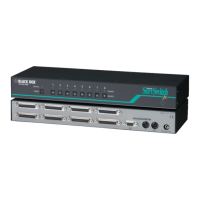
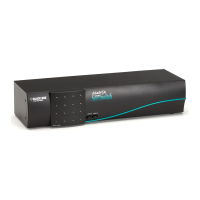
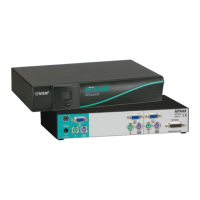
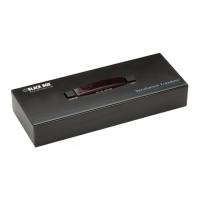



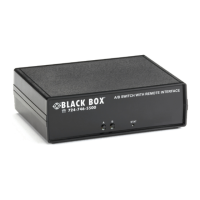
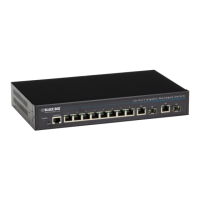
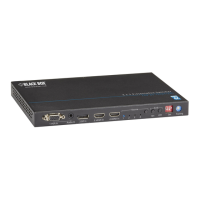

